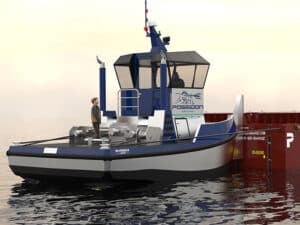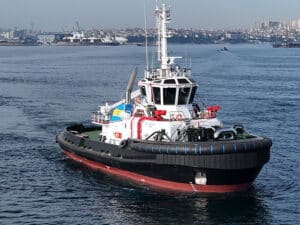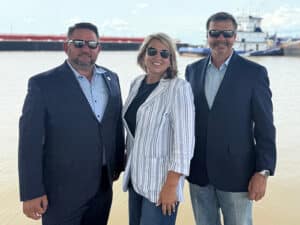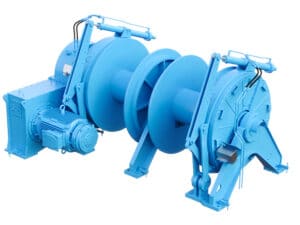
Turkish yard wins contract for LNG Canada tugs
Written by Nick Blenkey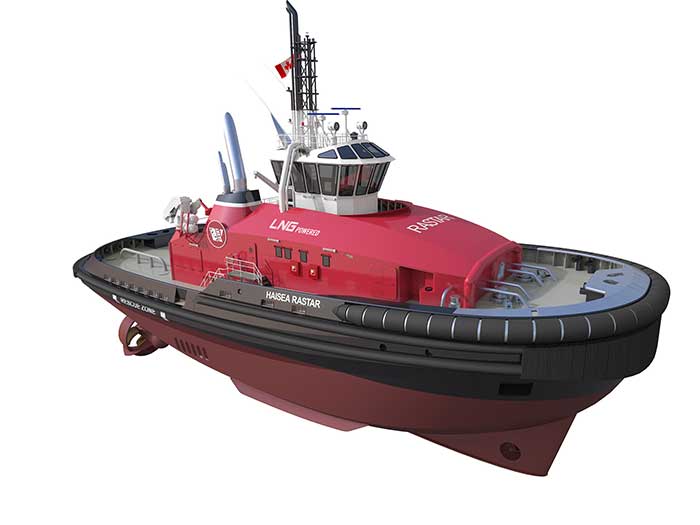
RAstar 4000-DF escort tugs will perform the entirety of the regular escort missions using LNG as their fuel
Turkey’s Sanmar Shipyards has won the contract to build the fleet of three battery-electric harbor tugs and two LNG dual fuel escort tugs that Haisea Marine Services will operate at the LNG Canada export facility on Canada’s west coast in Kitimat, B.C. The contract includes an option for a sixth tug.
The LNG tugs will be built in Sanmar Shipyards Altinova while the electric tugs will be built in Sanmar Shipyards Tuzla.
The tugboats are being designed by Vancouver-based naval architects and marine engineers Robert Allan Ltd. (RAL).
HaiSea Marine is a joint venture between the Haisla First Nation and Seaspan ULC.
The relationship between Robert Allan Ltd. and Seaspan, both based in Vancouver, dates back over 60 years, including collaboration with the predecessor companies Vancouver Tugboat and Island Tug & Barge that in 1969 merged to become Seaspan. Entrepreneur Dennis Washington acquired Charles H. Cates and Sons in 1992, a force in erational Canadian project.
The RAstar 4000-DF escort tugs are an evolution of the tugs of the same class in operation with Østensjø Rederi in Norway. They will measure 40 meters in length, and with approximately 100 tonnes of bollard pull, will not only be the west coast of Canada’s most powerful escort tugs in terms of sheer power but also be among the most high-performance escort tugs in the entire world with the ability to generate indirect forces in escort of approximately 200 tonnes.
Sgnificant for these vessels’ claim to fame will be the emissions reductions that they will attain compared to conventional diesel tugs. Even though they will feature an exhaust after-treatment system meeting IMO Tier III emissions standards, they will actually perform the entirety of the regular escort missions using LNG as their fuel. When operating in this mode on their 159 nautical mile escort route in each direction from Kitimat to the pilot station near Triple Island, B.C., emissions, in particular of CO2 will be dramatically cut compared to even Tier III standards.
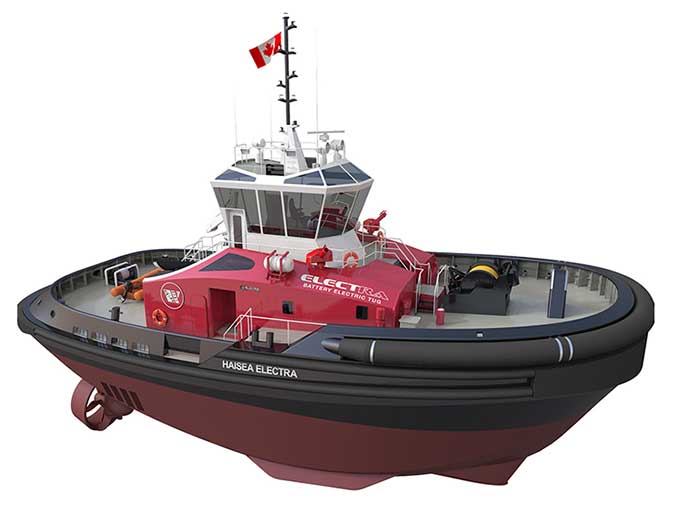
Operating in tandem in Kitimat, the harbor tugs will be even more impressive from an emissions standpoint. At 28 meters length, approximately 70 tonnes bollard pull, and most notably with up to 6,102 kWh of battery capacity each, these first-of-class ElectRA 2800 battery electric tugs are designed to perform their regular ship-berthing and unberthing missions on battery power. With an ample supply of clean hydroelectric power available in Kitimat, these tugs will be able to recharge from dedicated shore charging facilities at their berths between jobs, effectively resulting in zero emissions.
As a fleet, the tugs are expected to reduce emissions of CO2 by approximately 10,000 tonnes per annum compared to diesel powered alternatives, with major reductions of NOX, SOX, CO, and particulate matter as well. Both types of tugs are also designed to meet environmental notations available from the selected classification society (ABS – ENVIRO) including zero-discharge of any wastes. The harbor tugs, with their battery propulsion are also expected to be exceptionally quiet, both onboard and in terms of underwater radiated noise.
In addition to these environmental benchmarks, the escort tugs will be capable of pollution response, with significant recovered oil tankage aboard, complementing other dedicated assets in the region. They will also be capable of emergency towage of vessels that may find themselves in distress with an aft towing system for the purpose. And all project tugs will also be equipped with off-ship fire-fighting capability of 2,400 cubic meters per hour in accordance with ABS’ FFV 1 notation.
Equipment aboard will all be of the highest standards of quality, and the electric hawser winches on the escort tugs in particular will be exceptional performers, maximizing the tugs’ already formidable performance in escort in all conditions expected to be encountered in operation.
All project tugs will be outfitted to a very high standard of accommodations, with spacious dedicated cabins and ensuites for all regular crew, all with natural light, and well in excess of regulatory standards. Particular attention has been paid to minimize noise and vibration aboard the vessels, with a crew comfort (habitability) class notation to be assigned by ABSl.

